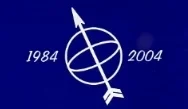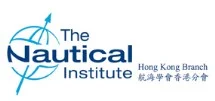May93
archive > Log > Log1993
Hong Kong

Recent casualties

MR MIKE STEVENS spent 12 years at sea with the Blue Star Line before deciding on a legal career. He joined Holman, Fenwick and Willan, a firm of solicitors in Hong Kong, in 1972. Since that time he has been involved in a number of casualty investigations.
In his opinion the casualty rate at sea is directly related to the discrepancy in the supply and demand of ships' officers. A shortfall in the supply resulted in an increased casualty rate as the majority of casualties are the result of human error. He found that, in his experience, marine casualties could be attributed to lack of knowledge, lack of experience, or lack of training.
Mr Stevens then went on to give explanations of three recent casualties that he had investigated, using flip-charts to describe the movement of the vessels involved.
The first example was one of many very similar radar-assisted collisions that he had been involved with. Each vessel sees another .vessel fine on the port bow and assumes a safe port-to-port passing will ensue. A collision results, generally in fog or reduced visibility, as in reality a fine crossing situation exists and correct avoiding action is not taken.
Similar accidents occur when vessels see each other ahead or nearly ahead on either bow, simply because correct radar interpretation is not made. Radar plotting is not carried out. Correct use is not made of ARPA facilities. This, of course, should be followed up by correct collision avoidance action.
Too many officers still make small alterations of course to avoid collision in reduced visibility. Many ships' officers do not know the difference between true and relative motion when applied to radar plotting and presentation. This would appear to be due to a lack of knowledge which should have been gained while studying at a marine school for a certificate of competency.
The next example showed a casualty which occurred due to the lack of experience of the officer in charge of the 12 to 4 watch of a large modern vessel. He saw a smaller vessel on his port bow in a crossing situation and correctly deduced that his was the stand-on vessel. However, the other vessel, which was a fishing vessel on her delivery voyage, took no action. The officer concerned tried unsuccessfully to contact her by radio and then gave a signal of five short and rapid blasts on the whistle. Still no action by the other vessel.
He then took avoiding action correctly by going to starboard but at the same time the smaller vessel also went to starboard at die last minute. The large vessel cut the smaller one in half. It transpired that the OOW of the larger vessel had only been at sea for 18 months. Although he took the correct action according to the CoIRegs, a more experienced officer would have taken avoiding action much sooner.
The final example was Mr Stevens' first experience of a satellite navigator assisted grounding. The satnav of the ship concerned gave all the positions it obtained but indicated which were OK and which were non-OK. The OOW had only recently joined the vessel but the satnav on his previous ship only gave the positions which were sufficiently accurate to be used. In other words, he was not used to non-OK positions being indicated at all.
This misunderstanding was the beginning of a chain of circumstances which resulted in the ship going aground on a well charted reef. This casualty could fairly be attributed to the lack of on-board training of the officer concerned. He should have been informed of this important point when he joined the ship. This case also shows that the fitting of sophisticated navigational equipment does not necessarily mean fewer collisions.
Contributed by M. Pickthorne, MNI
Seaways May 1993

